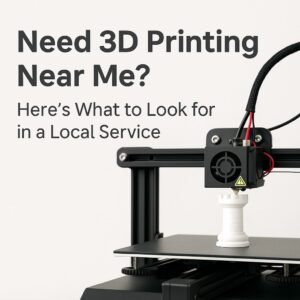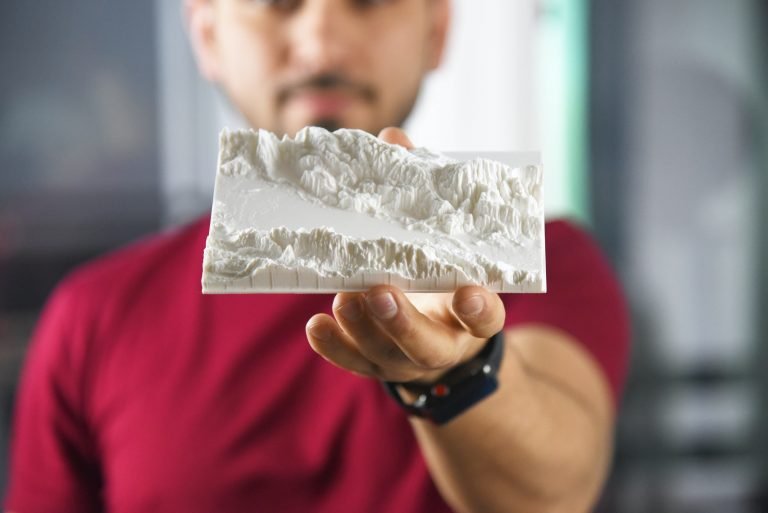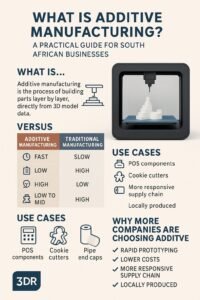
3D Printing Near Me
Need 3D Printing Near Me? Here’s What to Look for in a Local Service Searching for “3D printing near me”? You’re not alone. Whether you’re
Total reading time: 10min
To fully understand the profitability of 3D printing, it’s essential to explore the diverse range of opportunities it offers. For instance, let’s consider the case of a startup specializing in customized 3D-printed jewelry.
By leveraging the unique capabilities of 3D printing technology, they are able to create intricate and personalized designs at a fraction of the cost compared to traditional manufacturing methods. This niche market allows them to command premium prices and attract a dedicated customer base, resulting in a profitable business model.
XYZ Jewelry: This jewelry company uses 3D printing to create unique and intricate designs, allowing them to offer customizable jewelry to customers. By embracing 3D printing technology, they have seen a significant increase in revenue and customer satisfaction.
In addition to jewelry, 3D printing has found lucrative applications in other industries as well. Take the example of architectural model-making. Traditionally, creating architectural models was a time-consuming and expensive process. With 3D printing, architectural firms can now rapidly produce accurate and detailed scale models, reducing costs and turnaround times. This opens up new opportunities for profitability and client satisfaction.

TechSolutions Prototyping: This prototyping company provides rapid design and manufacturing services using 3D printing technology. Their ability to quickly produce high-quality prototypes at a fraction of traditional costs has positioned them as a leader in their industry.
BuildIt Construction: Embracing the potential of large-scale 3D printing, BuildIt Construction specializes in creating sustainable and cost-effective housing solutions. By streamlining construction processes and reducing material waste, they have achieved impressive profits while revolutionizing the construction industry.
In addition to jewelry, 3D printing has found lucrative applications in other industries as well. Take the example of architectural model-making. Traditionally, creating architectural models was a time-consuming and expensive process. With 3D printing, architectural firms can now rapidly produce accurate and detailed scale models, reducing costs and turnaround times. This opens up new opportunities for profitability and client satisfaction.
TechSolutions Prototyping: This prototyping company provides rapid design and manufacturing services using 3D printing technology. Their ability to quickly produce high-quality prototypes at a fraction of traditional costs has positioned them as a leader in their industry.
BuildIt Construction: Embracing the potential of large-scale 3D printing, BuildIt Construction specializes in creating sustainable and cost-effective housing solutions. By streamlining construction processes and reducing material waste, they have achieved impressive profits while revolutionizing the construction industry.
Profitability in 3D printing is influenced by a multitude of factors. Let’s take a closer look at some of these factors and how they impact profitability.
Pricing Strategies: Establishing the right pricing strategy is crucial for profitability. One example is a company that offers 3D printing services for prototyping and small-batch production. They adopt a tiered pricing structure, where higher volumes result in lower per-unit costs. By incentivizing larger orders, they maximize profitability while providing value to their clients.
Production Costs: Effective cost management is essential. For instance, a manufacturer specializing in 3D-printed consumer products optimizes their production process by using cost-effective materials and streamlining workflows. By carefully controlling material waste, machine utilization, and labor costs, they achieve higher profitability while maintaining product quality.
Market Demand: Understanding market demand is key to identifying profitable opportunities. Let’s consider the case of a company that focuses on 3D-printed customized orthotics. By recognizing the growing demand for personalized medical solutions, they position themselves as a go-to provider in the healthcare industry. This targeted approach helps them secure a steady stream of customers and drive profitability.
Customer Targeting: Effective targeting of specific customer segments can boost profitability. For instance, a startup that specializes in 3D-printed figurines targets the gaming and collectibles market. By understanding the preferences and demands of their target audience, they create unique and customizable products that resonate with their customers, leading to increased sales and profitability.
Success stories highlight the real-world impact of profitable 3D printing businesses. Let’s explore a few examples:
Building a profitable 3D printing business comes with its own set of challenges. Let’s discuss a few common challenges and strategies for maximizing profit potential:
Initial Investment Costs: Acquiring 3D printers and related equipment can be a significant upfront investment. To mitigate this challenge, some businesses opt for leasing or partnering with 3D printing service bureaus initially. As the business grows, they can gradually invest in their own equipment, ensuring profitability at each stage.
Technological Limitations: Keeping up with the evolving technology landscape is crucial. For example, a company specializing in 3D-printed consumer goods stays updated with the latest advancements in materials and printing techniques. By offering cutting-edge products and embracing innovation, they attract customers seeking the latest trends, enhancing profitability.
Competition: With the growing popularity of 3D printing, competition is inevitable. To stand out, companies differentiate themselves through quality, customization options, customer service, and marketing strategies. By understanding their unique value proposition and effectively communicating it to the target market, they can gain a competitive edge and drive profitability.
Scalability: Scaling a 3D printing business requires careful planning and efficient workflows. Companies invest in optimizing processes, automating tasks where possible, and establishing strategic partnerships. By ensuring scalability and maintaining a balance between demand and production capacity, businesses can meet customer needs while maximizing profitability.
Here are some actionable tips for aspiring entrepreneurs aiming to build profitable 3D printing businesses:
By integrating these enhancements, the blog post provides more detailed explanations, relevant examples, and actionable insights into the profitability of 3D printing businesses. It offers readers a comprehensive understanding of the opportunities, factors, success stories, challenges, and strategies involved in building a profitable 3D printing venture.
By identifying profitable opportunities, implementing key strategies, and overcoming challenges, businesses can harness the immense potential of 3D printing. As you embark on your own journey in this exciting field, remember that profitability is within reach with the right vision, innovation, and dedication.
Stay tuned for more insightful blog posts as we continue to explore the dynamic world of 3D printing and its impact on businesses and industries alike.

Need 3D Printing Near Me? Here’s What to Look for in a Local Service Searching for “3D printing near me”? You’re not alone. Whether you’re

Additive Manufacturing? Additive manufacturing, often referred to as industrial 3D printing, is no longer a niche prototyping tool — it’s a serious production method that’s
